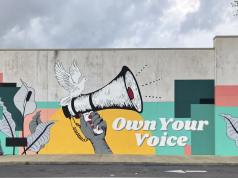By Glenn Ellis
The biological mechanisms of COVID-19 continues to baffle the top scientific minds who once thought COVID-19 primarily attacks the lungs. They were wrong! Turns out, it impacts nearly every major organ system in the body; and blacks are getting hit the worse.
The groundbreaking 2003 National Academies Press report, Unequal Treatment, defines a health care disparity as not simply a difference in health outcomes by race or ethnicity, but a disproportionate difference in health outcomes that has nothing to do with access to care.
The current COVID-19 pandemic has revealed a horrific state of health inequities in the African American communities in this country for all to see. As we know, older age, male sex, hypertension, diabetes, obesity, and associated cardiovascular diseases (including coronary artery disease and heart failure), are important risk factors associated with worse outcomes; specifically, case-fatality rates vary over 100 percent. As we also know, that puts African Americans in the “front of the line” for the full wrath of COVID-19.
African Americans are contracting COVID-19 at higher rates and are more likely to die. Why is this uniquely important to me? I am a medical ethicist; I study health care disparities; and I am a black man.
Dr. Nicholas A. Christakis of Yale University feels that, “We are just at the beginning of this ‘first wave’ and there is still much damage to come.” He feels that this COVID-19 pandemic is playing out very much like the 1957 influenza pandemic in the United States. Tragically, that pandemic killed about 150,000 in the country. This was at a time when the U.S. population was only about 170 million. The current population is over 350 million. At the rate COVID-19 is spreading, it could kill 250,000 or more of the current U.S population! Even the President recently upped his numbers for the projected deaths to 100,000, from the initial projection of 30,000-50,000.
The Centers for Disease Control and Prevention (CDC) had already identified shortness of breath, cough, and fever as the most prominent major symptoms. They updated the list to include, loss of taste or smell, chills, shaking with chills, muscle pains or aches, sore throat and headache. All of these symptoms are not necessary to be infected. In fact, don’t forget, some people can be infected, have no symptoms, yet they can be highly contagious! For those who do have symptoms, they can appear anywhere from two to 14 days after exposure to this novel coronavirus.
Most recently, they have added another, equally deadly, symptom: strokes.
Under “normal” circumstances, CDC data reflects that someone in the United States has a stroke every 40 seconds. Every four minutes, someone dies of stroke. Every year, more than 795,000 people in the United States have a stroke. Before the COVID-19 pandemic, the risk of having a first stroke was nearly twice as high for blacks as for whites, and blacks had the highest rate of death due to stroke. Stroke remains a leading cause of death in the United States. While deaths from strokes has decreased over time for the country as a whole, it remains two times higher for African Americans.
COVID-19 seems to produce blood clots – and lot of them. And this has been especially well documented in intensive care units. We all know that blood clots lead to stokes (ischemic), and the recent COVID-19 stroke patients are trending in the 30-40 years old range, while the median age (pre-COVID-19) for these types of severe strokes was 74!
The coronavirus patients are mostly experiencing the deadliest type of stroke, (known as large vessel occlusions, or LVOs) they can destroy the parts of the brain responsible for movement, speech and decision-making in one blow because they are in the main blood-supplying arteries; basically the “life center” to the brain.
When a blood clot gets caught in one of the arteries that go from the heart to the lungs, it’s called a pulmonary embolism (PE), causing damage to your lungs and low oxygen levels in your blood. If the clot is big or the artery is clogged by many smaller clots, a pulmonary embolism can be fatal.
Dialysis patients are routinely given blood thinners to prevent clots from occurring as their blood passes through the machine. Under normal circumstances, the dialysis machines almost get clots.
However, doctors are finding that the dialysis machines are now clotting sometimes two or three or four times a day. Even though blood thinners are able to reduce clotting in most patients with COVID-19, if a dangerous clot does form, it can often be dissolved with a clot-busting drug. But blood thinners that prevent clots or break them up can also cause uncontrolled bleeding, so this is a very delicate medical balance in very sick people. This might explain, yet another weird symptom: purple toes. The evidence continues to grow indicating that the blood clots associated with COVID-19 are causing problems through the body, including areas that become purple on the hands and feet. Doctors are even reporting a number of children manifesting mysterious symptoms.
Since as many as 50 percent of people infected with COVID-19 are showing no symptoms, remember, especially now, (and particularly if you are African American) any sudden stroke-like symptoms – such as numbness in the face or arms, blurred vision, slurred speech, or severe headache – should alert you to seek treatment immediately.
Glenn Ellis, is a Harvard Medical School Research Bioethics Fellow and author of Which Doctor?, and Information is the Best Medicine. For more good health information visit: www.glennellis.com.




